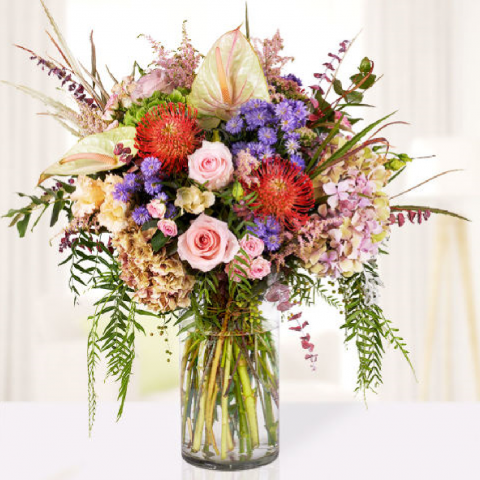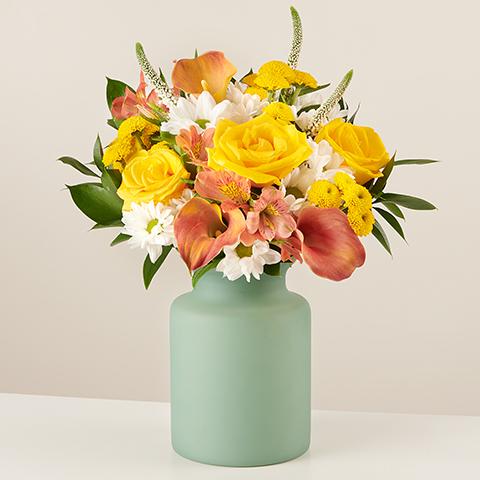All daisies are members of the same family of flowers. Be that as it may, they don’t all operate in a similar manner. They all have their own requirements and their own lifecycle. This is a look at six different types of daisies and their blooming routines. The daisies being reviewed are as follows:
- Shasta daisies
- Painted daisies
- Michaelmas daisies
- Marguerite daisies
- Ox-eye daisies
- Gerbera daisies
If you’re thinking of adding daisies to your garden, knowing when they bloom is a great help. This allows you to know when to plant them, and when to expect your beautiful reward. Of course, you must create the proper conditions for a plant for it to grow and bloom healthily. Apart from just laying out the blooming routines for the daisy varieties, there is also some brief information on them. By the time you’re finished, you should understand daisies better.
Shasta Daisies
The first variety to be covered is the Shasta daisy. There was a time when these flowers were categorized as chrysanthemums. They are now, however, Leucanthemum x superbum. The plants tend to grow between one and three feet tall.
The blooms usually emerge during late spring, and the blooming continues until early fall. They do require attention, as they tend to droop over under normal circumstances. If you allow this to happen, you’re in for a short blooming season.
Once you notice that the blooms are starting to fade, it is time for the flowers to be deadheaded. Frequent cutting is also required. Once you get these things done, then you can expect a blooming season that runs right through the summer.
Their stems are twisted, which means that they are typically only useful in small bouquets and arrangements.
Painted Daisies
The next daisy variety on the list is painted daisies, which are also known as Tanacetum coccineum. These daisies are known for the assortment of beautiful colors that they display when they are in bloom. The colors displayed include various shades of red, pink, and yellow. Sometimes, the blooms are simply white.
These flowers tend to start blooming in the middle of summer. They’re not very large plants, as they usually grow no more than two feet tall. If the stems are strong, the blooming season can go all the way until early fall.
The reason for their name is the effect that food coloring has on the white ones. Should you decide to add food coloring to their water, the flowers begin to change color. It’s almost as if someone is painting a white canvas.
Michaelmas Daisies
These daisies are also known as Aster novae-angliae. While they don’t become the tallest flowers in the world, they are the tallest of the daisies. This variety can reach heights of up to five feet.
Like other daisy varieties, these daisies are also known for the many different colors that they display during bloom. Michaelmas daisy flowers tend to be white, red, pink, purple, and lavender.
Their blooming season is also like that of many other daisy varieties. It takes place during the late summer, and it continues until fall. You may not see this blooming season if you don’t care for it right, though. These daisies prefer their soil well-drained, and they love full exposure to the sun. You also need to remember to do your cutting only after they have opened fully.
While they’re not popular cut flowers, they can be used for this purpose. When you use them this way, they can survive for up to 10 days.
Marguerite Daisies
These daisies are for those who want to put on a fabulous show when the weather gets cool. Based on their appearance, these daisies are consistently confused with Shasta daisies. You can tell the difference, however, because the marguerite variety has a more shrubby and mounded appearance.
An undying love for cool weather is one of the defining traits of these flowers. Therefore, their blooming mostly takes place during spring and fall. Be that as it may, these daisies do continue to bloom during the summer.
Should you pick these daisies as soon as they open, you can use them as cut flowers for your vase. If you do, note that they don’t usually last over 10 days. When the plants are in bloom, the flowers that emerge can be either pink or white.
Ox-eye Daisies
While this plant is a part of the daisy family, it’s not as beloved as most of its relatives. This is because this variety is more of a flowering weed than a traditional plant. Unfortunately, it can cause issues for pasture grasses and native plants. This is because it tends to displace them. Some of the flowers it does this to are threatened species.
The ox-eye daisy is a perennial herb, which is believed to have originated in Europe. While it is mostly spread by seed, it can use its creeping roots to spread.
These invasive weeds can grow up to three feet tall, and they are characterized by their aggressiveness. The plant tends to bloom from summer to fall, and the flowers feature white petals with a yellow center.
Gerbera Daisies
Gerbera daisies get the final spot on the list. Though you may see them in many countries, they are native to South Africa. More specifically, they are from the Transvaal region. In the United States temperate zones, they are grown as either container plants or perennials.
In semi-tropical zones, they grow year-round, and they tend to bloom in spring and summer. The blooms appear in a variety of colors, such as white, yellow, pink, salmon, and orange.
Summary
Daisies look amazing whenever they bloom. Knowing when to expect your daisies to bloom can help you to care for them adequately. This article looked at six daisy varieties, and it gave an overview of their expected bloom patterns.
The varieties covered were Shasta daisies, painted daisies, Michaelmas daisies, marguerite daisies, ox-eye daisies, and Gerbera daisies. These daisies all produce amazing flowers during bloom, which are well worth the wait for them.








